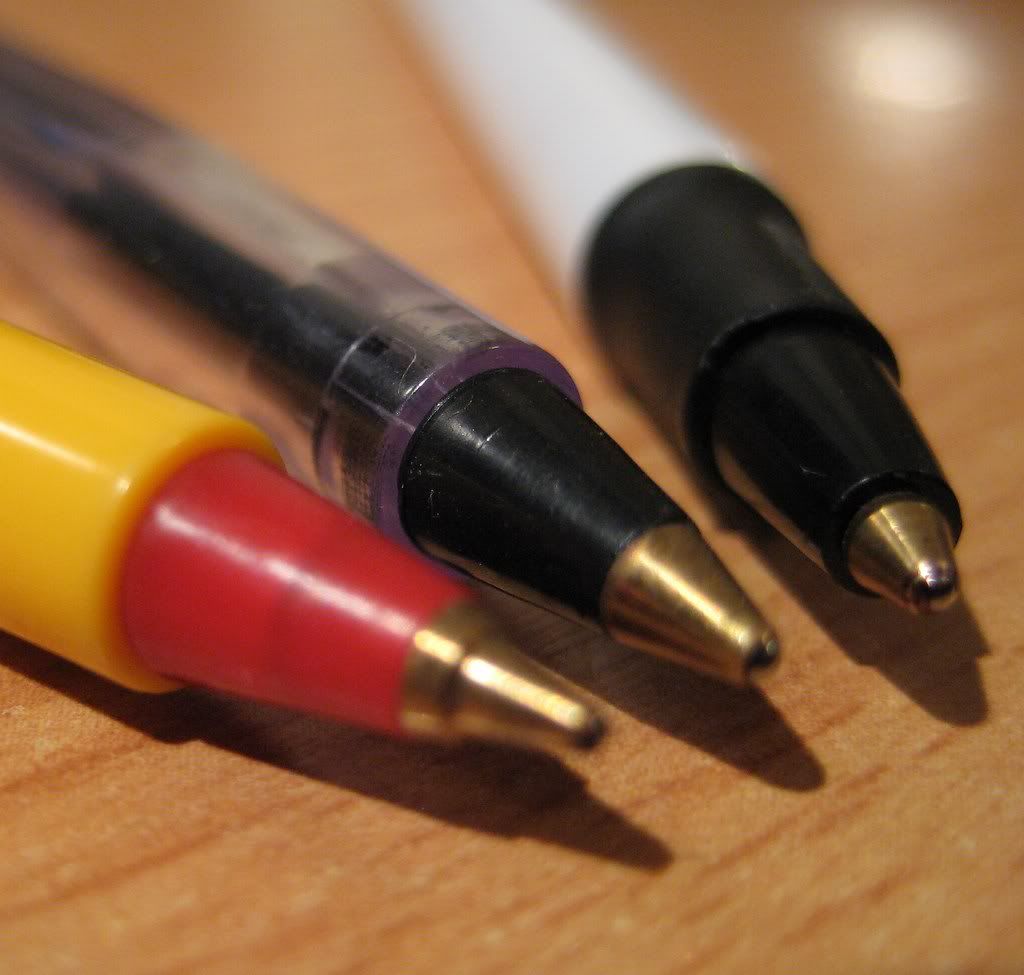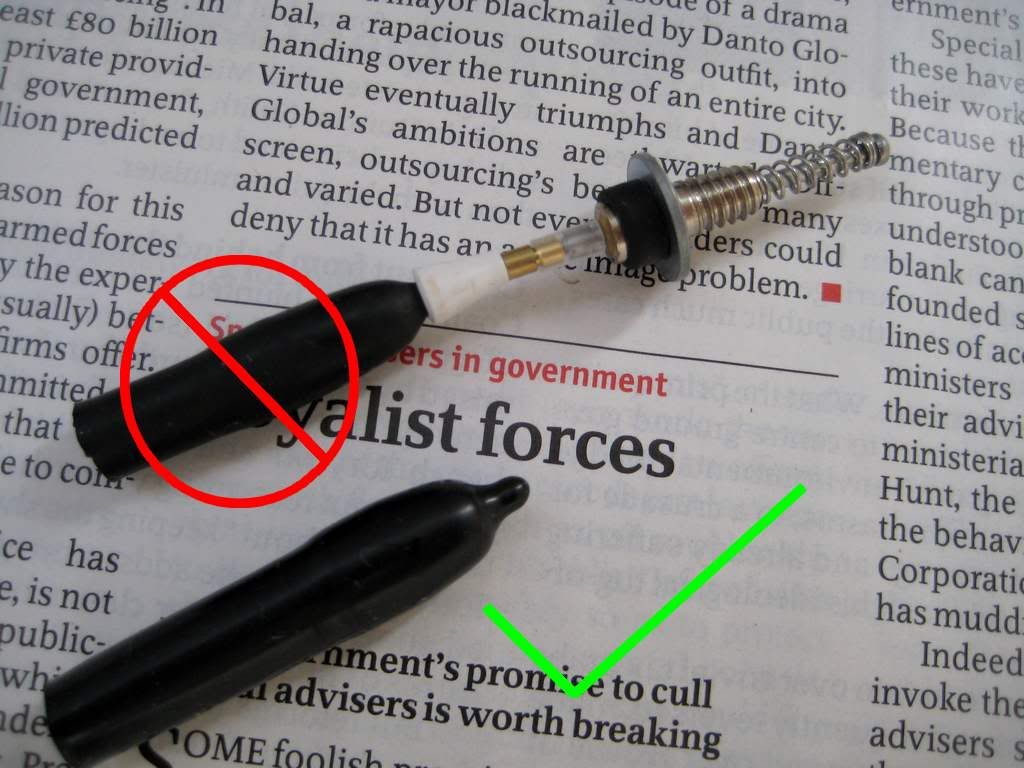Until now! The humble ballpoint makes knocking together a vacumatic fountain pen a breeze. Its ink tube gives an excellent ramrod for the diaphragm pellet. Another piece makes a perfect pellet holder. The tip itself is perfect for connecting the pellet holder to the plunger rod. At a stroke, with no tooling at all, half the vacumatic assembly simply presents itself!
 |
| From left to right: Staedler 430F, Staedler 430M, British Red Cross freebie. |
Parts Used (all prices include UK shipping)
- An old ballpoint pen. This was a freebie from a British Red Cross mailshot. The Staedler Stick 430 seems to be a compatible design too.
- A Dunlop/Woods bicycle valve, and its cap. £2.25 a pair at TemeCycles eBay shop.
- A blind rivet, solely for its tang.
- A free aftershave, eau de toilette, or perfume sampler, the mini spray type, for its tiny compression spring.
- A small metal washer.
- Aquarium sealant (silicon sealant) £3.99 from Maidstone Aquatics.
- A vacumatic diaphragm, the large size (definitely not debutante size) £2.08 from Cathedral Pens.
 |
| The Hero 616 Jumbo uses a much larger vacumatic diaphragm than the Parker 51, as it lacks the latter's dedicated choked barrel chamber. |
Tools Used
- An unbranded mini drill, and the various cutting & sanding attachments they come with.
- A cake of blank DVDs, to hold the curved barrel straight as I cut the blind cap. I don't have a mitre box and had to improvise!
- A sharp, thin utility blade, I think it's the long Stanley type.
With the parts to hand, it was time to make a start on the conversion, beginning with the next post - "Cutting the Blind Cap".
No comments:
Post a Comment
Comments seem to be working okay again. You can try leaving one, it might work! If not, you can reach me on twitter if you like @Flounder_FPN